In the late 1990s, I was craving a tremolo pedal and had set my sights on the recently discontinued Boss PN-2. My then girlfriend and future wife had other big plans. Using a revolutionary new thingamajig called “the Internet,” she found a handmade tremolo pedal called the Tremulus Lune from a collective/DIY kit site called 3ms Pedals in St. Louis, Missouri. For me—a public-radio listener seeking an alternative to mass-produced devices—the company’s approach was like a siren’s song: Payment options included bartering, and acceptable items for trade included everything from soldering stations and oscilloscopes to bicycle parts, toaster ovens, and coffee. When my girlfriend contacted 3ms founder Dan Green about buying the Lune, he convinced her to upgrade it with two mods: Swapping out the buffered footswitch for a true-bypass one (this mod was actually pretty unusual in the ’90s) and installing a ramp switch for, well, fun.
The pedal was housed in a handpainted electrician’s junction box with seemingly random knob placement, and it was signed by its maker, “Kelly.” Beneath an expansive nest of coiled and tangled 24-gauge wire rested a small stationery envelope containing a piece of cardboard with a printed layout diagram and components punched through it like thumbtacks. Featuring what some call a CBCB (“cardboard circuit board”), it was held together by the point-to-point-soldered leads, and insulated from shorting against the potentiometers by nothing more than paper and tape.
Despite its eyebrow-raising construction, the Lune sounded fantastic. That is, when it worked. When you got lucky and all the connections were firing, it was a throbbing, mysterious, device capable of all kinds of pulsing mayhem, along with a very healthy gain boost and a thoughtful “spacing” control that changed the distance between cycles (as opposed to a speed knob which simply changes how quickly the volume goes up and down). I spent hours inside that pedal resoldering connections, replacing wires, and eventually replacing the switch. It sometimes failed when we did outdoor shows in humid environments, which made me think the failure was due to the cardboard getting saturated with moisture.
Years later, 3ms changed its name to 4ms because of pressure from 3M. (How anyone might have confused a ragtag gang of sonic communists with the multinational behind Scotch tape and Post-it notes boggles my mind, but such are the pitfalls for small builders then and now.) I ordered a replacement board several years back to rebuild my Tremulus, but kept the original CBCB as a reminder of what once resided inside. Meanwhile, Dan Green has steered 4ms and its DIY counterpart commonsound.org beyond pedals to all kinds of new, innovative noise devices and synth modules. The company’s influence can be seen today among many effect pedal builders we consider “boutique.” The way the pedals were signed and personalized by the builder responsible lives on in our work at Caroline Guitar Company, as well as many others. The home-cooked products and easygoing “marketing” (to use the term very, very loosely) are echoed in Brady Smith’s Old Blood Noise Endeavors. And remnants of the haphazard, almost dangerous-looking packaging can be found in the work of outfits such as Dwarfcraft Devices and Fuzzrocious.
To pay homage to this odd device and its effect on both my sound and experience—and to more broadly celebrate the spirit of pursuing different, inspiring sounds that prevent us from becoming “pedalbored”—I decided to speak with some of my favorite pedal builders about the unusual, off-the-beaten-track effects that made them think and play differently, and, by extension, influenced their own pedal designs.
YouTube It
Although videos of original 3ms Lunes are virtually nonexistent, an Australian DIY enthusiast created this video of the clone from a kit sold on 4ms’ commonsound.org store.
The Eventide H910 Harmonizer was gorgeously made, with crazily spot-on accurate pitch shifting for its time, transposing within +/- 1 cent. “They knew what they were doing,” says Jack Deville of Mr. Black Pedals. Photo courtesy of Arthur Stone
Jack Deville, Mr. Black Pedals – Eventide H910 Harmonizer
There are two groups of technically savvy people in our niche industry: Those who frequently have to be the “doctor” in the room, and those who really should be the doctor in the room. My friend Jack Deville is the latter. In addition to his own work at Mr. Black, Jack has been a valuable contributor to a number of other companies’ products. I had high hopes that the designer of the Shepard’s End Infinite Flanger—“the world’s first barber pole through-zero flanger”—would have a good story to tell about something that caught his attention. He did not disappoint.
“Have you ever looked inside an Eventide H910?” he asked. I was completely confused. I’d heard of the H3000—a legendarily expensive device from the 1980s that purportedly contained all the Steve Vai magic that you wouldn’t be able to acquire by practicing—but I was unfamiliar with the H910. Naturally, I consulted the magic network that my wife used to purchase my cardboard tremolo from a gang of socialists.
“It’s eye-opening, man—nuts,” Jack continued. “Gorgeously made, crazily spot-on accurate pitch shifting for its time. Transposing within +/- 1 cent. They knew what they were doing. It was a total wake-up call. These things cost crazy money back in the day—roughly $1,500 at release, which would be about $6,000 or $7,000 now if you adjusted for inflation. But studios had to have them.”
Jack was asked to work on a H910 by a friend who’d only found one other person willing to do so—and at a steep price. When he opened it up, he was startled by the craftsmanship and design. “There are better A/D converters in here than in a CD player,” he explains. “There’s MIDI capability with an external keyboard control. There’s a dual-sided, plated-through circuit board—that’s NASA-level shit for its time! There’s also an LED readout, a terrific layout with smart uses of ribbon connectors, and separate digital and analog power and grounds. And here’s the kicker: This is from 1975. It’s better made than stuff we regularly see today—over 40 years later!”
The H910’s effect on Jack was profound. “I’d been working on the Mod Zero pedal and I was feeling pretty good about it, but then I cracked this thing open and was just, like, ‘Fuck—why even do this [line of work] at all? This thing is a computer, and I’m making this dumb little flanger.’ It made me think about learning a process, learning a system, and how I apply that to my own work.”
YouTube It
How can you resist a video with a 1950s-style propaganda voice intoning, “Today we are going to learn about the many wonders of CMOS logic and the many ways it can frighten and confuse us”?
The Schumann PLL is capable of the kind of ragged polyphony and noisy collapse you’d hear in an ’80s arcade game like Missile Command, with descending laser-beam pitch glides and vocal roars as notes decay. Photo courtesy of Lynn Schumann
Brian Hamilton, smallsound/bigsound – Schumann Electronics PLL
One thing I appreciate about Brian Hamilton’s work at smallsound/bigsound is his capacity to surprise: In an industry where it seems five new effects companies appear each week with a new overdrive clone, Hamilton’s work—including his pitch-bending No Memory delay and Team Awesome Fuzz Machine—can delight and vex players looking for something different and unexpected. Because of this, I presumed the gear that has inspired Brian would be a bit wilder, with a broader scope of control than most traditional guitar effects.
While the Schumann Electronics PLL is described on the company’s website as an analog harmonizer that turns the input signal into a square wave with a multiplier and divider that adds intervals to your note, most players who play through one would describe it as the ultimate signal mangler and mutator—one where the dangerous textures of something like a Fuzz Factory might serve as a starting point. From there it can devolve into square waves completely devoid of pick attack—stuff that resembles a programmed Nine Inch Nails sequence—or into the kind of ragged polyphony and noisy collapse you’d hear in an ’80s arcade game like Missile Command, with descending laser-beam pitch glides and vocal roars as notes decay.
“I think we’re all used to certain effects where there’s a certain expectation of what’s going to happen when you play, and the controls seem to operate independently,” Brian begins. “Gain—that gives you more. Tone makes it bright or dark. Volume? That’s pretty self-explanatory. But with the PLL, everything seems interdependent and connected. You mess with the preamp, and that changes what you’ll want to do with the lag time, the tracking, or the multiplier. You have to figure out how things are connected and the balancing act involved in getting it right.”
While chatting about the PLL and how it influenced the way he thinks of sounds and his own designs, Brian said something that really stuck with me. “The PLL might have been the first effect I ever played that made me really consider what can happen after you play a note. I think before that—even with a lot of wild effects—there’s stuff you take for granted about how stuff will respond. The PLL kind of turns that on its head.”
YouTube It
The guys at BassFuzz.com give us a primer on the PLL’s daunting collection of dials, knobs, and switches.
By modulating delay times in a random way, the Pefftronics Super Rand-O-Matic “humanizes” a double-tracking effect, emulating the natural variation that a player might have while trying to play the exact same part the same way twice. Photo courtesy of Proto Guitars
Matt Farrow, Alexander Pedals and Disaster Area Designs – Pefftronics Super Rand-O-Matic
I first heard about the Pefftronics Super Rand-O-Matic in a Facebook thread about Sarah Koenig’s popular Serial podcast and its inconclusive finale. A friend speaking up in its defense made an analogy to this pedal, stating that attempting to reverse-engineer or recreate this very complicated device—even if unsuccessful—would be worthwhile for the education and experience. When I read the thread I didn’t even know the Rand-O-Matic was a real pedal—I thought it was a hypothetical name invented to illustrate a point. After confirming its existence, I replied, “I think I’d rather work with [Alexander Pedals and Disaster Area Designs builder] Matt Farrow and try to recreate it as an emulation.” Lo and behold, who should arrive on the thread but the devil himself, posting a photo of a prototype enclosure and explaining that he’d already been at work considering such a project.
Matt has perhaps the most encyclopedic, far-reaching mind of anyone in our game. In a conversation that’s initially about guitar pedals, we might discuss the Capitol Records digital-mastering tones used for introductions on audiocassettes, the operational processes Pizza Hut had to develop for their dual-crust pie fiasco, the curious placement of singles on the second side of Queensrÿche’s Operation: Mindcrime, or the virtues of the Casio DG-10 “guitar.”
“The Rand-O-Matic was built in the 1990s, and at its core it’s a really good digital flanger,” Matt explains. In the mid ’90s, there weren’t many pedal flangers on the market, other than the Boss BF-2. “Flanging basically comes from two modulated delay lines. But the problem with the analog flangers of that time was that it was almost impossible to make the sweep range large enough—you were limited by the clock rate, so you had to choose which way you’d go. But with the digital lines that [Pefftronics founder and designer] Jeff Vallier created with a ton of logic-based stuff, a microprocessor, and discrete logic chips, he could have his cake and eat it too with both short and long lines. You could have a longer one that creates that guttural roar, and a shorter one that creates that frothy jet whoosh.”
At $250 (nearly $400 in today’s money), the Rand-O-Matic was cost-prohibitive for most players in the early days of boutique. But for those brave enough to pony up the cash, the random function is the prize: By modulating the delay times in a random way, it “humanizes” a double-tracking effect more like an actual second guitar track, emulating the natural variation that a player might have while trying to play the exact same part the same way twice.
In considering how he would recreate such a device, Farrow hits upon a particular theme about emulation of older effects. “You can create a reissue, where you try to do everything exactly as it was done originally. Or you can create a work-alike, where your goal is to sound the same. Or you can create an analogue—something that emulates and builds upon the experience of such a device. With 90 percent of our industry making clones of a dozen archetypes, I’m not sure any kinds of straight copies are really what’s needed. I guess that’s why I’m more interested in pursuing my idea of what these devices can do. To quote Whitney Houston, ‘If I fail, if I succeed, at least I lived as I believe.’”
I was going to correct Matt that he was really quoting Linda Creed, but I figured he said Whitney Houston just to test me.
YouTube It
EffectsDatabase.com demonstrates the helicopter, laser, and other weird sounds to be had in the Rand-O-Matic.
Developed before more polyphonic harmonizers or multiple-octave devices became readily available, the OC-07 is much more suited for creating fake bass accompaniment or fattening distorted single-note lines. Photo courtesy of Eric Mann
Brad Fee, Mojo Hand Fx – Pearl OC-07 Octaver
A word of advice to any guitarist who is planning on going to NAMM (or who aspires to go): Please don’t try to impress people. You’re not going to get discovered—16th-notes in E minor or blues licks in A are something we’ve all heard before. That said, I have to give Brad Fee of Mojo Hand Fx credit where its due. After three loud days stationed across from his company’s booth at Nashville NAMM last summer, I really enjoyed and appreciated his playing. While succinctly and tastefully demonstrating his line of pedals, Brad consistently sounded like a Mike Campbell- or Keith Scott- style sideman with a weekly church gig in Texas. His company’s effects reflect a similar, practical ethos—a traditional design mindset with expanded function and versatility. Given this, I was kind of surprised to find out that a centerpiece of Brad’s own pedal collection is a pretty unusual piece that’s also being used rather unconventionally.“I’ve gone back and forth and bought the Pearl OC-07 Octaver over and over, and now I just can’t get away from it” Brad explains. “But I don’t think I’m using it the way it’s meant to be used. Most people who have an octave pedal like this use it for fattening-up single-note riffs. I just use it for clean chords, sometimes on an arpeggio or a strum, and it gets all glitchy, creating this weird, ‘wrong’ noise that is kind of out of context and different—almost like a ring modulator, but still something that can be used in a song.”
It struck me as surprising that Brad would prefer the Pearl over more modern, more accurate pitch shifters or doubling devices. Developed before more polyphonic harmonizers or multiple-octave devices became readily available, the OC-07 is much more suited for creating fake bass accompaniment or fattening distorted single-note lines. But the very fact that it’s inadequate to Brad’s task is kind of what does it for him. “You hit that Em barre chord on the 7th fret, and things go kind of bonkers,” he continues. “There are these dissonant layers because it doesn’t track that well, and there’s noise—but it’s subtle and works in a band context. It’s not this obnoxious thing that throws things off, but it’s interesting enough that you take notice.”
Seeing how much he enjoys this unusual effect for himself, I wondered if Brad has considered building a variant for his own brand and customers. “This is definitely one of those devices where you wonder ‘Is this only for me—am I the only person in the world who likes this?’” he laughs. “We’ve put some time and money into developing something similar, but it would require a bunch of components—and with the time we’d have to put into it, we’d have to charge something like $300 for it. And with us being known for more practical, utilitarian stuff, that kind of price for something kind of odd isn’t really the right kind of crazy.”
YouTube It
Enjoy a glimpse of the glitchy goodness pouring from the Pearl OC-07’s guts.
The warm, dark, and resonant Maestro FSH sampler sounded futuristic 40 years ago and still sounds that way today. And yet, oddly natural at the same time.
Jamie Stillman, EarthQuaker Devices—Maestro FSH-1 Filter Sample/Hold
I once heard an excellent description of travel as an act that takes a person out of context, be it your job, home, habits, or friends. When I searched for the originator of this view, it turned out the idea came from Rush drummer Neil Peart’s 2004 book, The Masked Rider: Cycling in West Africa. This mindset reminds me of Jamie Stillman and the team at EarthQuaker Devices in Akron, Ohio. While they make an endless array of useful boosts, drives, fuzzes, and delay pedals, what sets their work apart is how much it can take you outside of yourself. Your usual context—your habits, tones, sonic identity, and self perception as a player—kind of disappears when you plug into a Bit Commander or a Rainbow Machine (“the original unusable guitar effect pedal,” as Jamie calls it) and hear how they transform your sound and approach.
Jamie’s effect collection is pretty legendary—even among most of us hoarders who end up starting pedal companies—so I really wanted to know what the standout was for him. When I asked him, he didn’t hesitate for a second: “The Maestro Filter Sample/Hold—it’s the sound of warm computers speaking to each other.”
He elaborated when I asked about making his own filter-based device. “I’ve made dozens of filter-based things we didn’t release—there are seemingly billions of them out there, and almost none of them do it right. The Maestro is warm and dark, but still super resonant. You can easily make a filter get dark, but then you’re dulling it and it’s just unresponsive. For it to be ring-y and yet still full and warm, I know this can sound dumb, but it’s not natural—and yet totally natural.” The sample-and-hold function also holds a lot of charm for Jamie. “I know it’s something that synth guys take for granted, look back on, and think, ‘That’s nothing—I’ve got a billion CV controls interconnected to all these parameters.’ But to listeners, the sound of the sample and hold is always futuristic. It was futuristic sounding 40 years ago, and it’s still futuristic sounding today. It sounds like what we think of sci-fi and computers.”
When I asked Jamie whether the Maestro influenced the Interstellar Orbiter, EarthQuaker’s first filter-based pedal, he replied, “We went in a really different direction with that. Everything we make has to be something I really, really like. When there’s something like the FSH-1, which I think is really special—everything from that funky, red-white-and-blue folded steel enclosure to that sound and the possibility that components have aged, leaked, or were simply outside of spec—I think there’s something about it that goes beyond a schematic. And if I can’t make something I’d rather use for what that device does, then I should leave it be and make something else.”
YouTube It
Demos of original FSH-1s being played with a guitar are just about as rare as the Tremulus Lune, but companies like Makes Sounds Loudly Pedals offer DIY kits to capture the glorious sounds of yore.




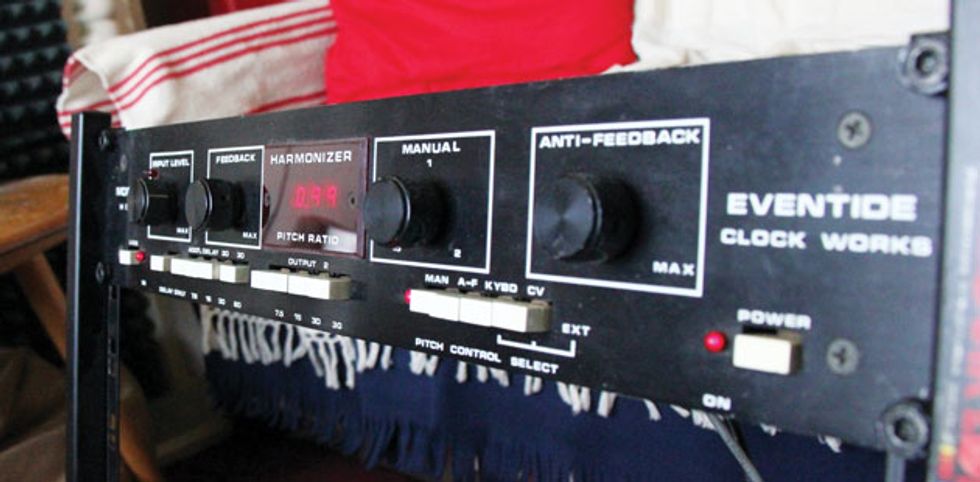
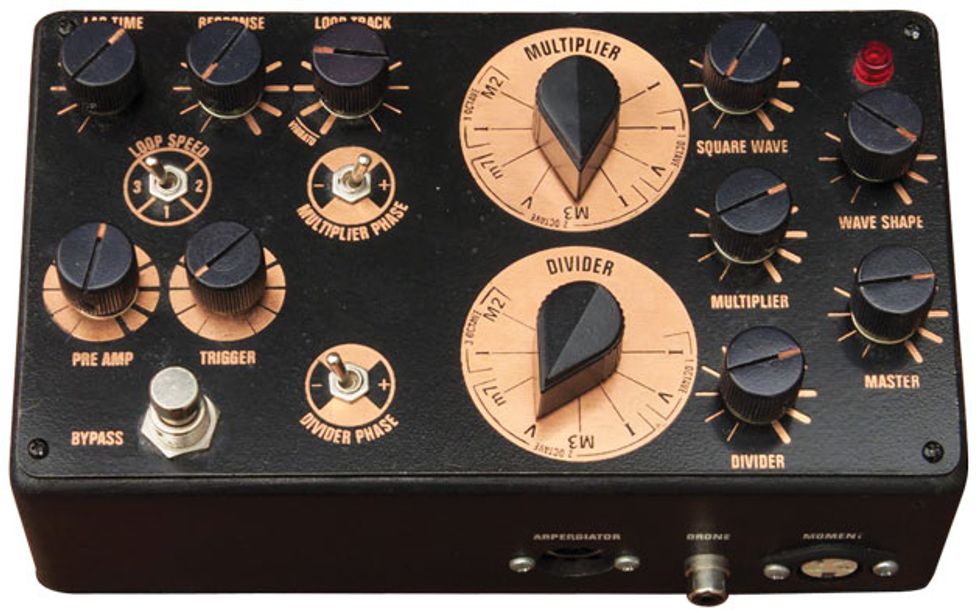
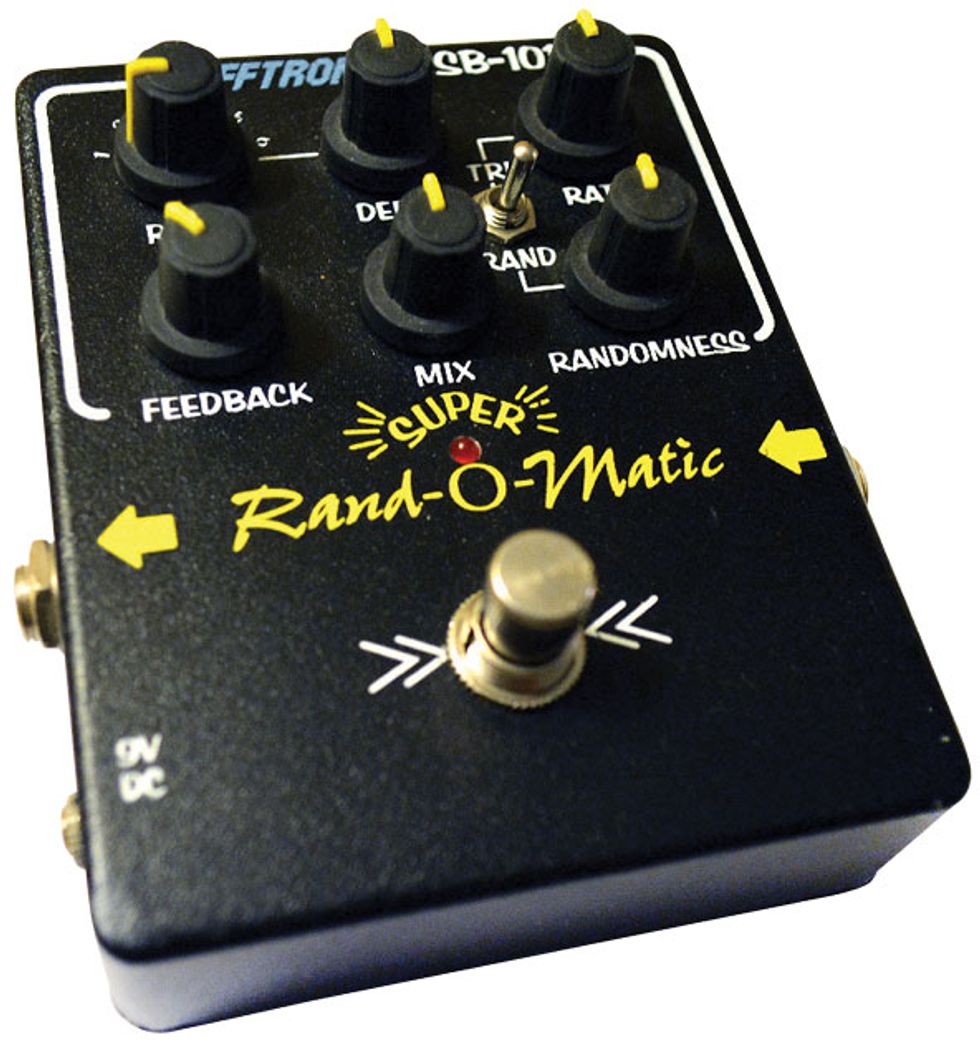
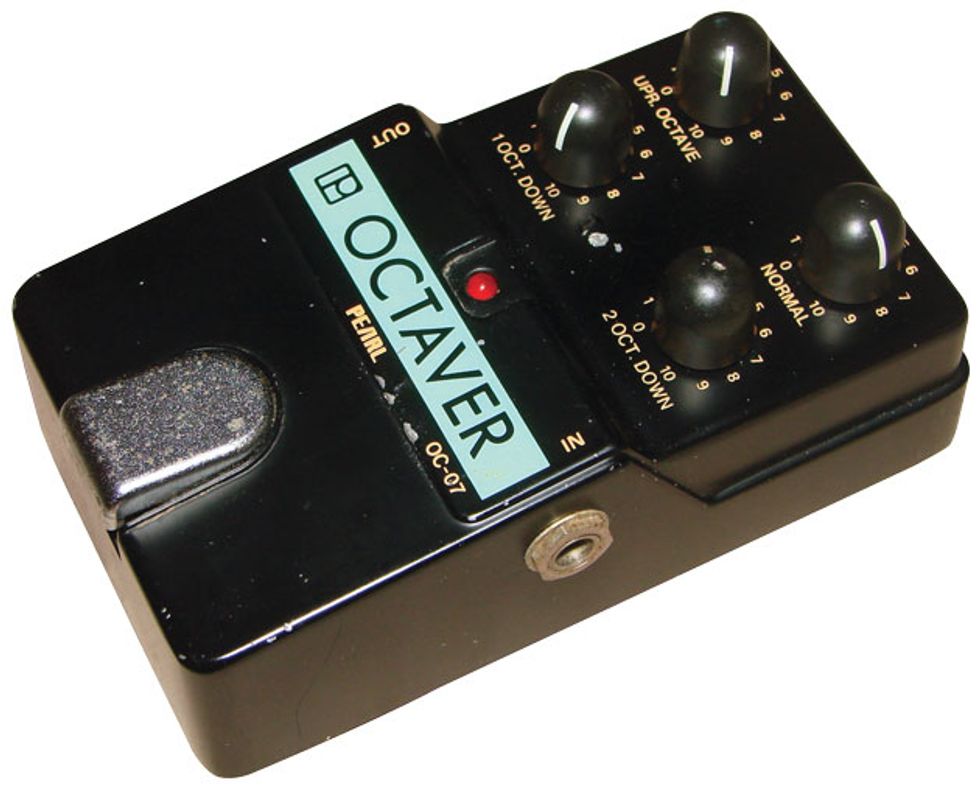
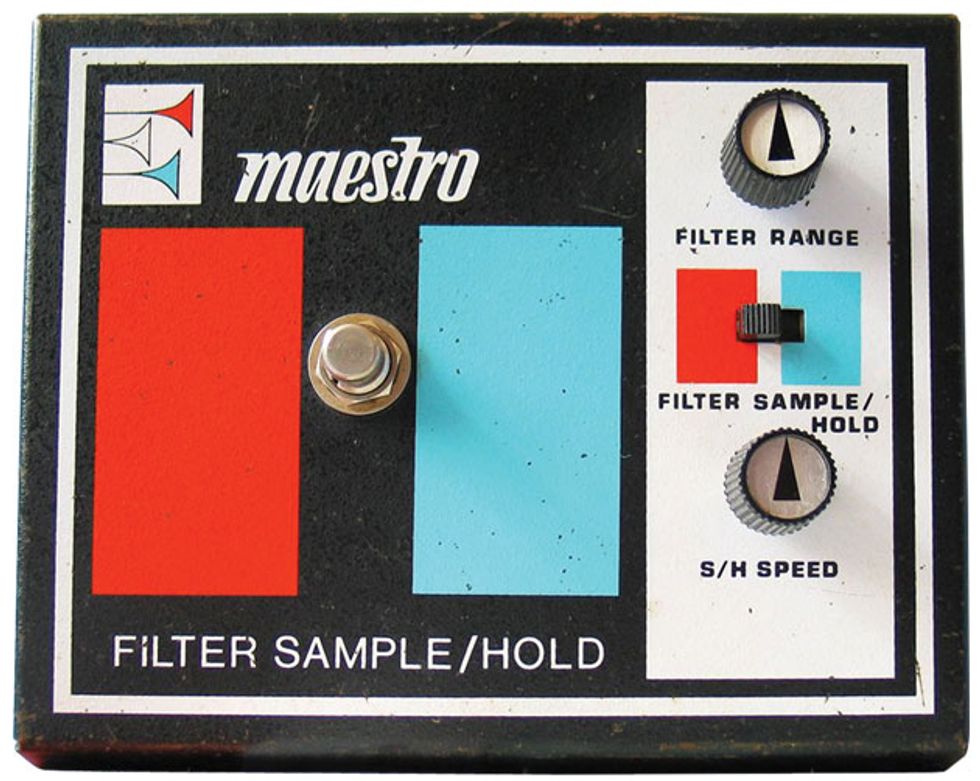






![Rig Rundown: Russian Circles’ Mike Sullivan [2025]](https://www.premierguitar.com/media-library/youtube.jpg?id=62303631&width=1245&height=700&quality=70&coordinates=0%2C0%2C0%2C0)











